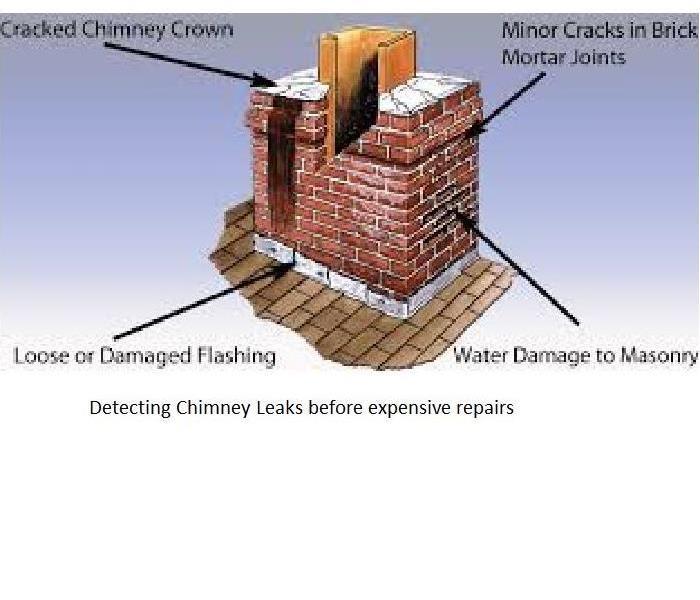Chimney Leaks
12/9/2020 (Permalink)
Many homeowners assume that leaky chimneys will be visible by water in the fireplace or flue. Due to the complexity of most chimney systems, leaks can present themselves in an unrecognizable way. This leads to significant damage once the leak has been found. If the water gets into the walls, it destroys or damages the plaster, wallpaper, paneling, and paint. The moisture in the walls can lead to moldy wood and rot. The mold and moisture that is present can spread to other parts of the home causing more damage. The key to keeping leak repairs simple and affordable is catching problems as soon as they are noticed.
Chimney leaks are most common during the season where we have long periods of rainfall. Even if your chimney has never developed leaks it can in just one season of heavy rain. Due to the chimney being constantly exposed to the outdoor elements, the greater risk of masonry damage and breakdown.
The life of the mortar that cements masonry and holds it together is not usually any longer than 25 years. When the mortar begins to deteriorate, moisture can pour into the chimney structure. If mortar is not replaced it can result in a collapsed chimney or tilt.
The Flashing is a metal part of the chimney that forms a waterproof seal between the roof and chimney. Flashing is difficult to install and tends to rust and develop leaks. Damage from a faulty flashing can cause water damage before the leak has been detected. These leaks can cause serious structural damage and should be checked as a routine maintenance on your home.
If you have experienced water damage from your chimney, call the water damage experts at SERVPRO of the Quad Cities. The water damage restoration process begins with a detailed inspection of your property, including a damage assessment. We start mitigation immediately to save money on further structural damage and repairs. SERVPRO Franchise Professionals will manipulate temperature and relative humidity to remove the remaining moisture. We use specialized equipment, including industrial air movers and dehumidifiers, to remove water retained by building materials and other hard-to-access moisture. The drying process is carefully monitored by using moisture meters until the materials return to acceptable drying goals.
Call your local SERVPRO of the Quad Cites today for your inspection and water mitigation needs. Locally owned and operating in your community with 24/7 professional service.






 24/7 Emergency Service
24/7 Emergency Service
